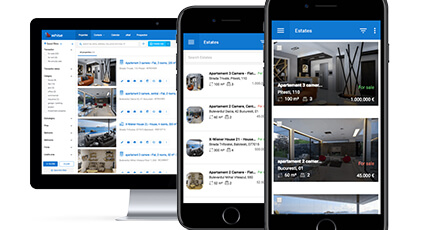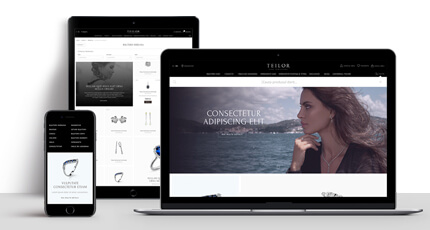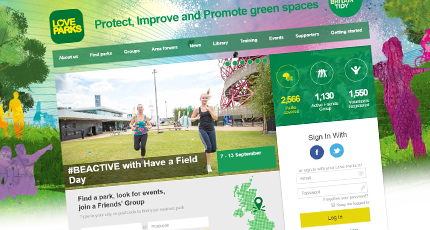If you are about to hire a dedicated development team for your project, most probably already asked (yourself and the provider): “Kanban or Scrum? Which one is right for my project?”
Both built on an Agile collaborative, self-organizing, and cross-functional approach, these frameworks were designed to help the development team managers better coordinate and balance work among workers.
As you’ll discover in this article, several convergent points are as differences between Kanban and Scrum.
But, first thing first, let’s go through what Kanban and Scrum mean and for what kind of projects are suitable.
What is Kanban?
Kanban concept finds its roots in Japan, back in 1603, during a stable economic growth when all-size businesses were dealing with a highly competitive environment and trying to draw customers’ awareness and attention.
This context explains the concept’s meaning defined through two Japanese words: “Kan”= sign, and “Ban”= board. Shop owners displayed “KanBans” – signboards – to help their markets stand out on the street and to draw customers’ attention.
So, KanBans were, practically, cards designed to communicate as briefly as efficient USPs (uniques selling propositions) about shops’ offers.
Later, the Kanban concept was taken over as a development methodology by Toyota (more precisely by Taiichi Ohno).
Today Kanban concept is used, especially as an Agile framework for software development projects. Its primary mechanism of operation consists of visualizing and solving the highest-priority tasks in the backlog.

Being card-based, Kanban is practically a “pull system” where team members take over a card when they know they have the capacity for it.
This framework helps the development teams provide continuous improvement and processes, keep them flexible, reduce the number of work-in-progress tasks, and accelerate the leap from “Doing” to “Done.”
Kanban advantages:
- flexible methodology;
- keep the team’s effort balanced;
- team members have equal roles;
- focus on providing workflows visualization;
- flexible objectives split (e.g., work in progress tasks can be split in To plan, To check, Doing, etc.);
- shortened time cycles: limit work in progress stage;
- a Kanban card is designed to keep in one place all the work and the flow’s history;
- collaborative improvements: the team continuously improves the process.
Kanban team:
- Service Request Manager (SRM) – in charge to understand the clients’ needs and expectations;
- Service Delivery Manager (SDM) – improves the efficiency of the workflow;
- Team members (developers, QA, etc.).
When is Kanban the right choice for your project?
Kanban is suitable, especially for ongoing processes and projects. If you intend to hire a dedicated development team and your project relies on dynamic objectives, the Kanban system will be the right choice.
Looking for a reliable dedicated team to develop your project?
Get in touch with us!
What is Scrum?
Scrum framework also has an interesting origin. It was built on the model provided by Hirotaka Takeuchi and Ikujiro Nonaka (authors of “The New New Product Development Game”) in 1986. The concept was related to the rugby principles in a metaphorical perspective for defining the way teams work together on the field:
“The ‘relay race’ approach to product development may conflict with the goals of maximum speed and flexibility. Instead a holistic or ‘rugby’ approach – where a team tries to go the distance as a unit, passing the ball back and forth – may better serve today’s competitive requirements.”
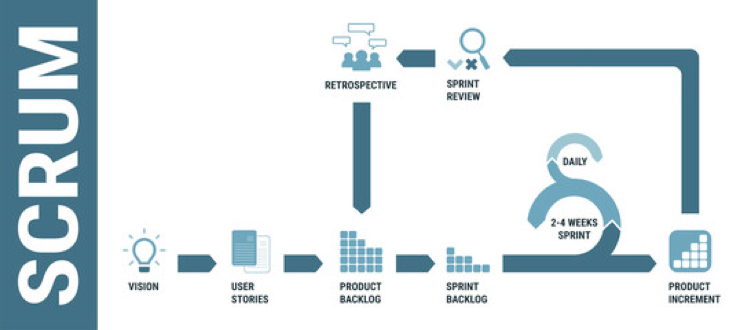
Scrum framework is a structural Agile approach based on a complex of management principles. Its main focus is on getting things done faster by dividing work into stages – sprints.
Scrum advantages:
- well-structured approach;
- clear start and finish dates;
- the opportunity to use the same team for multiple projects;
- daily meetings for keeping tasks and objectives on track;
- clearly defined team roles;
- clearly defined responsibilities;
- easy to identify where improvements are needed;
- high level of predictability – rare situations of changing priorities.
Scrum team:
- Product Owner – acting as team manager and as an interface with the client;
- Scrum Master – keep the team stick to the Scrum principals;
- Developers.
When is Scrum the right choice for your project?
If you are about to develop a complex project with an external team, Scrum will be the right choice for you, being higly predictive (you’ll have great control over every project’s stages, deadlines and deliverables).
Kanban vs Scrum
Both frameworks – Kanban and Scrum – come with several advantages. While Scrum is more rigid but also provides the great advantage of the high predictivity across processes and stages, Kanban is more about flexibility and getting urgencies done.
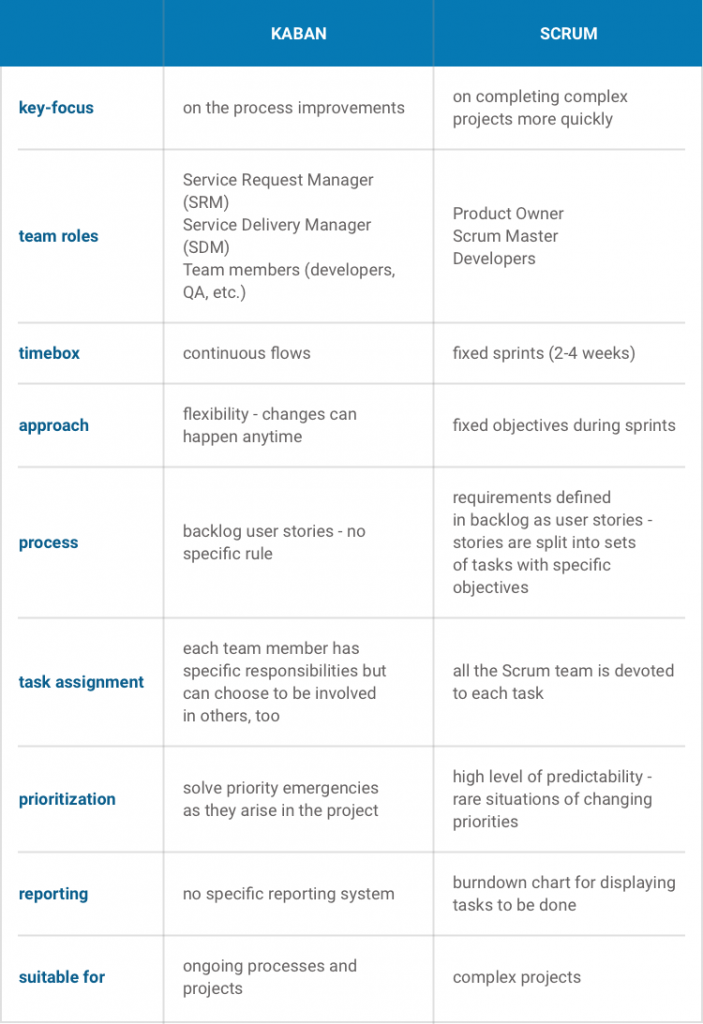
Scrumban (Scrum + Kanban) – the mixed framework model
Choosing between Kanban and Scrum is not always necessary. There are plenty of projects that are developed with a mixed system: Scrumban.
Scrumban uses the predictive nature of Scrum together with the improvements approach from Kanban.
The benefits brought by this hybrid system in a nutshell:
- high quality;
- high responsiveness rate to dynamic needs/objectives;
- high predictability and control over the deadlines and deliverables;
- continuous improvement;
- redundant tasks are eliminated;
- added values to the processes.
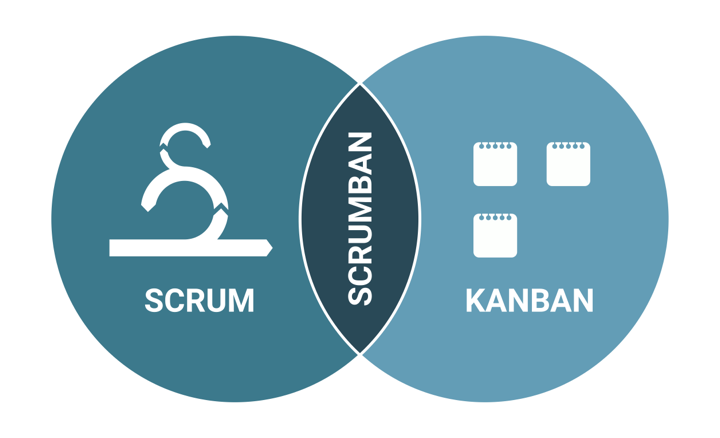
How to select the right company that provides dedicated teams? (criteria checklist)
- 10+ y of experience on the IT market – a guarantee that your project will be taken over by experienced teams;
- various projects in the company’s portfolio – illustrative both for dedicated teams and for your industry;
- large and stable number of employees – the more employees a company has, the easier will be for it to provide you the team you need;
- team roles provided by the company – an extra-guarantee that you can count on a complete team for developing your project;
- disruption-free recruitment projects – recruitments processes based on modern and efficient technologies.
Project example developed with dedicated teams
Client: Tourpaq ApS
Technologies: ASP.NET / MS SQL Server / ASP.NET AJAX / WCF
Category: Business applications / Dotnet items / Tourism and Hospitality
Client’s need: T ourpaq needed an up-to-date Tour Operator Management System that would enable the users to manage everything that has to do with their activity, from a single dashboard. We implemented the following features: pricing, offers, availability, online sales, invoicing, due payments, real-time reports, data visualizations, price control automation, marketing, and integration with multiple third-party systems, such as GDS systems, insurance companies or SMS and email systems. The client also requested us to build for him Tourpaq Destination App (a modern solution for guides and tourists) and Tourpaq Guest App (an app that enables end-users to enjoy their holiday).
Team architecture: a Software Architect + a Project Manager + a Database Specialist + a UX Designer + 2 UI / Web Developers + 6 .NET Developers
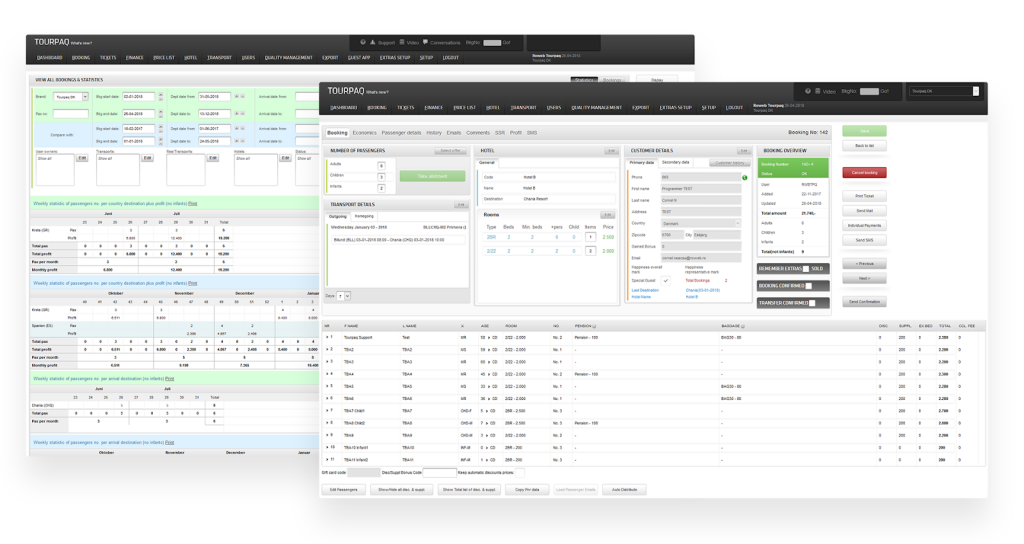
Client’s benefits:
- High quality and fast development;
- Quick responses to support requests or new requirements;
- Flexibility in planning.

“Together with Roweb we’ve built TourPaq up, from a booking system for small tour operators, into one of the leading solutions on the market, addressing the needs of large tourism businesses. We were impressed by the level of professionalism that Roweb showed throughout our collaboration. They have always managed to understand our needs and wishes and help us turn our ideas into reality. The travel industry is in a constant development, which requires us to understand emerging needs for changes and puts great demands on the development team. Roweb have always managed to be up to the challenge and stay ahead with new technologies we could use. It is a pleasure to cooperate with such a professional partner, which not only delivers what´s agreed upon, but also have the future in mind, when developing new things. Roweb continues to be our partner, maintaining communication with TourPaq users, taking care of daily corrections and planning the development directly with them. Since the beginning of our collaboration we’ve entrusted Roweb with all project management responsibilities, leaving it to them to put into practice our ideas and input, which has enabled us to focus on selling the product and therefore achieve a huge competitive head start. I can truly recommend Roweb and have really enjoyed the 6 years that we have worked together.”

Bjarke Hansen
CEO, Owner TourPaq Aps
Count on our 130 skilled developers to turn your ideas into functional solutions.
Request a free quote
